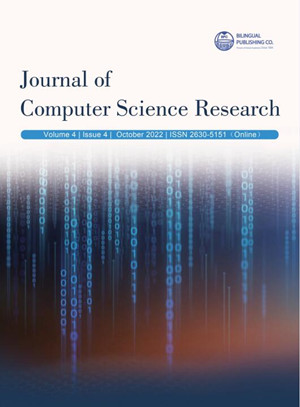
CO-BOT: An Intelligent Technique for Designing a Chatbot for Initial COVID-19 Test
DOI:
https://doi.org/10.30564/jcsr.v4i4.5287Abstract
The coronavirus (nCOV-19), which was discovered, has now spread around the world. However, managing the flow of a large number of cases has proven to be a significant issue for hospitals or healthcare professionals. It is becoming increasingly challenging to speak with a medical expert after the epidemic's initial wave has passed, particularly in rural areas. Thus, it becomes clear that a Chatbot that is well-designed and implemented can assist patients who are located far away by advocating preventive actions, and viral updates in various cities, and minimising the psychological harm brought on by dread. In this study, a sophisticated Chabot's design for diagnosing individuals who have been exposed to COVID-19 is presented, along with recommendations for immediate safety measures. Additionally, when symptoms grow serious, this virtual assistant makes contact with specialised medical professionals.
Keywords:
Chatbot, COVID, CloudReferences
[1] Gates, B., 2020. Responding to Covid-19-A once-ina-century pandemic? The New England Journal of Medicine. 382(18), 1677-1679.
[2] Sohrabi, C., Alsa, Z., O’Neill, N., et al., 2020. World health organization declares global emergency: A review of the 2019 novel coronavirus (COVID-19). International Journal of Surgery. 76, 71-76.
[3] Thorp, H.H., 2020. A dangerous rush for vaccines. Science. 369(6506), 885.
[4] Nehme, M., Braillard, O., Alcoba, G., et al., 2020. COVID-19 symptoms: Longitudinal evolution and persistence in outpatient settings. Annals of Internal Medicine. 174(5), 723-725.
[5] Driss, M., Almomani, I., Alahmadi, L., et al., 2022. COVIBOT: A Smart Chatbot for Assistance and E-Awareness during COVID-19 Pandemic. SMARTTECH 2022: The Second International Conference of Smart Systems and Emerging Technologies; Apr 2022; Saudi Arabia. DOI: https://doi.org/10.48550/arXiv.2204.07851
[6] Bharti, U., Bajaj, D., Batra, H., et al., 2020. Medbot: Conversational artificial intelligence-powered chatbot for delivering telehealth after covid-19. 5th Interna-tional Conference on Communication and Electronics Systems (ICCES); 2020 Jun 10-12 ; Coimbatore, India.USA: IEEE. pp. 870-875. DOI: https://doi.org/10.1109/ICCES48766.2020.9137944
[7] Ferreira, T.C., Marcolino, M.S., Ramos, I., et al., 2020. ANA: A Brazilian Chatbot Assistant about COVID-19. Proceedings of Conference ACL 2020 Workshop on Natural Language Processing for COVID-19 (NLP-COVID); 2020 Jul; Seattle, Washington, United States.
[8] Dennis, A.R., Kim, A., Rahimi, M., et al., 2020. User reactions to COVID-19 screening chatbots from reputable providers. Journal of the American Medical Informatics Association. 27(11), 1727-1731.
[9] Tiwari, V., Verma, L.K., Sharma, P., et al., 2021. Neural network and NLP based chatbot for answering COVID-19 queries. International Journal of Intelligent Engineering Informatics. 9(2), 161-175.
[10] Abd-Alrazaq, A.A., Rababeh, A., Alajlani, M., et al., 2020. Effectiveness and safety of using chatbots to improve mental health: systematic review and meta-analysis. Journal of Medical Internet Research. 22(7), e6021.
[11] Abd-Alrazaq, A.A., Alajlani, M., Ali, N., et al., 2020. Perceptions and opinions of patients about mental health chatbots: Scoping review. Journal of Medical Internet Research. 23(1), e17828.
[12] Li, B., Wisniewski, G., Crabbé, B., 2021. Are Transformers a Modern Version of ELIZA? Observations on French Object Verb Agreement. Proceedings of the 2021 Conference on Empirical Methods in Natural Language Processing; 2021 Nov; Punta Cana, Dominican Republic. USA: Association for Computational Linguistics. p.4599-4610. DOI: https://doi.org/10.18653/v1/2021.emnlp-main.377
[13] Colby, K.M., 1981. Modeling a paranoid mind. Behavioral and Brain Sciences. 4(4), 515-534.
[14] Raij, A.B., Johnsen, K., Dickerson, R.F., et al., 2007. Comparing interpersonal interactions with a virtual human to those with a real human. IEEE Transactions on Visualization and Computer Graphics. 13(3), 443-457.
[15] Fadhil, A., 2018. Beyond patient monitoring: Conversational agents role in telemedicine & healthcare support for home-living elderly individuals [Internet] [Submitted on 2018 Mar 3]. Available from: https://arxiv.org/abs/1803.06000
[16] Amato, F., Marrone, S., Moscato, V., et al., 2017. Chatbots Meet eHealth: Automatizing Healthcare. WAIAH@ AI* IA. Computer Science. 40-49.
[17] Comendador, B.E.V., Francisco, B.M.B., Medenilla, J.S., et al., 2015. Pharmabot: A pediatric generic medicine consultant chatbot. Journal of Automation and Control Engineering. 3(2).
[18] Josephine, D.D., 2021. Amazon Lex based personalized chatbot for IoT LAB@CIT. International Journal of Advance Scientific Research and Engineering Trends. 6(5).
[19] Armstrong, S., 2018. The apps attempting to transfer NHS 111 online. Technology in Healthcare. DOI: https://doi.org/10.1136/bmj.k156
[20] Holmes, S., Moorhead, A., Bond, R., et al., 2019. Usability testing of a healthcare chatbot: Can we use conventional methods to assess conversational user interfaces? Proceedings of the 31st European Conference on Cognitive Ergonomics; 2019 Sep 10. p. 207- 214. DOI: https://doi.org/10.1145/3335082.3335094
[21] Gupta, J., Singh, V., Kumar, I., 2021. Florence-a health care chatbot. 2021 7th International Conference on Advanced Computing and Communication Systems (ICACCS) ;2021 Mar 19-20; Coimbatore, India. USA: IEEE. p. 504-509.
[22] Rogers, R., 2021. Internet of things-based smart healthcare systems, wireless connected devices, and body sensor networks in covid-19 remote patient monitoring. American Journal of Medical Research. 8(1),71-81.
[23] Waheed, N., Ikram, M., Hashmi, S.S., et al., 2022. An Empirical Assessment of Security and Privacy Risks of Web based-Chatbots [Internet] [Submitted on 2020 May 17]. Available from: https://arxiv.org/abs/2205.08252
[24] Bornholt, J., Joshi, R., Astrauskas, V., et al., 2021. Using lightweight formal methods to validate a key-value storage node in Amazon S3. Proceedings of the ACM SIGOPS 28th Symposium on Operating Systems Principles; 2021 Oct. pp. 836-850. DOI: https://doi.org/10.1145/3477132.3483540
Downloads
How to Cite
Issue
Article Type
License
Copyright © 2022 Author(s)

This is an open access article under the Creative Commons Attribution-NonCommercial 4.0 International (CC BY-NC 4.0) License.




 Projit Das
Projit Das






